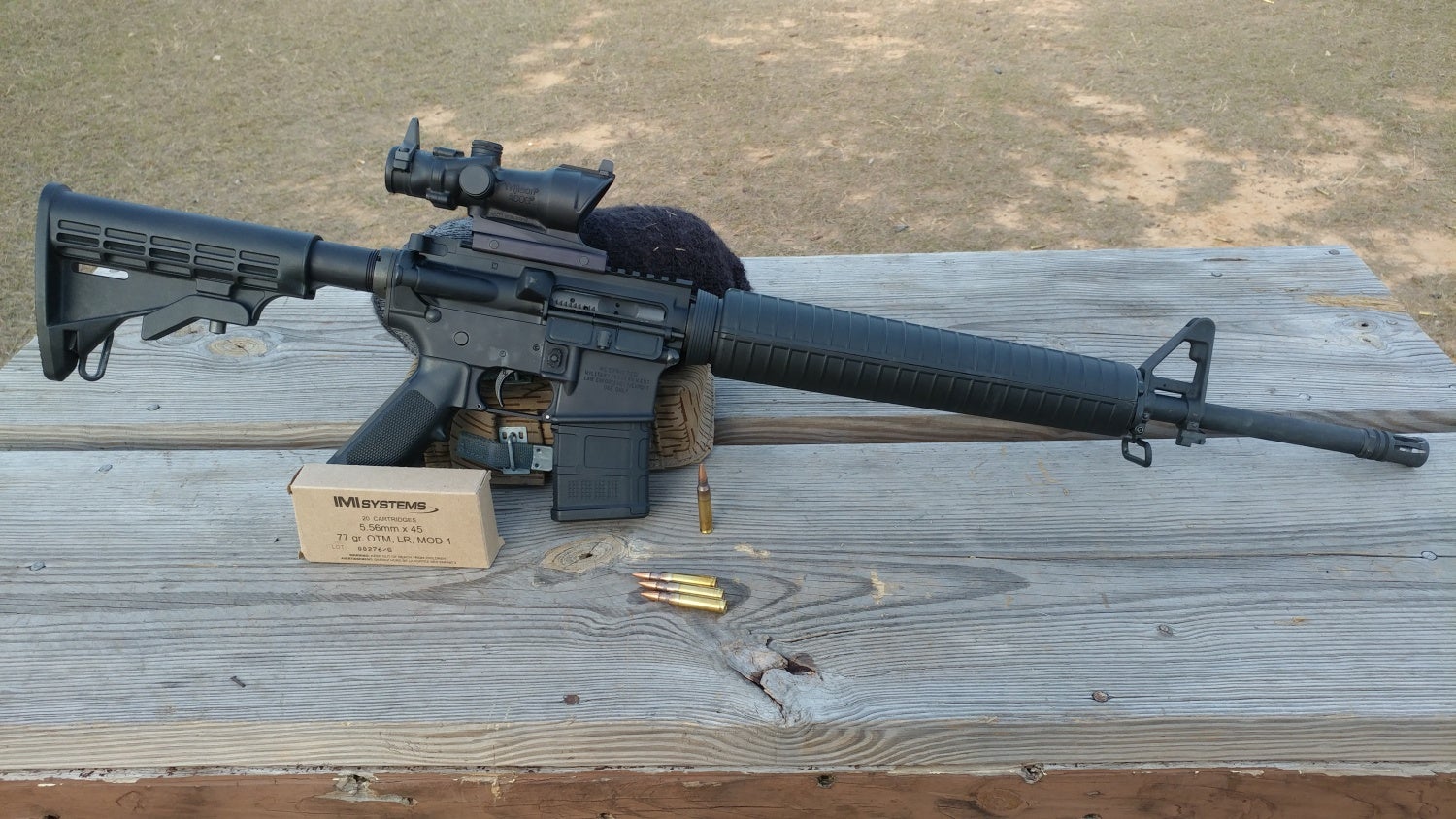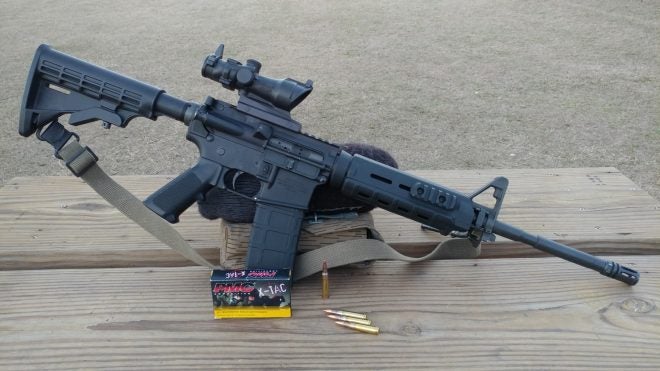Next up for the Big Freakin’ Cartridge Test is Korean manufacturer PMC’s clone of M193 Ball, called XP193. This ammunition features very uniform-looking external dimensions, attractively finished brass cases and projectile jackets, and a reasonable price. Interestingly, XP193 appears to use a lower drag 55gr bullet, possibly based on the Sierra 55gr, instead of the somewhat draggier Remington-style projectiles used by Federal, IMI, and others for their M193 clones. I like to use XP193 when I need full-power ammunition without spending too much. Continuing on from the last installment, we are now looking at the velocity test results for the 20″ barrel (more on the 16″ later).
The test procedure was as follows:
- Condition ammunition to 70 °F +/- 5 degrees for at least 1 hr (in practice ammunition was always conditioned overnight).
- Mount chronograph to barrel or rail.
- Record the temperature in the conditioned container before each string.
- Withdraw one round of ammunition from the cooler.
- Load and immediately fire the round.
- Cool chamber back to ambient conditions for 30 seconds*
- Repeat steps 3 through 6 nine more times.
This procedure was followed for 14.5″, 16.1″, and 20″ barrel length velocity tests. To measure velocity, a Magnetospeed V3 chronograph was used attached to the barrels of the 16.1″ and 20″ uppers, and the rail of the 14.5″ upper. It needs to be noted that for all 16″ barrel testing, a cooling time of 10 seconds was used instead of 30, as it was becoming obvious that the additional 20 seconds were unnecessary. In the future, 10 seconds will be used for all barrel lengths.
The chronograph results for the 20″ FN chrome-lined CHF barrel are as follows (Shot #, followed by muzzle velocity in ft/s):
1. 3,137
2. 3,140
3. 3,128
4. 3,134
5. 3,141
6. 3,144
7. 3,128
8. 3,158
9. 3,133
10. 3,124

The 20″ configuration used for velocity testing, shown here with the IMI 77gr Razor Core load that was the subject of two earlier articles.
Which gave us the following figures:
Min: 3,124 ft/s
Max: 3,158
Avg: 3,136
Standard Deviation: 9.4
Extreme Spread (highest minus lowest): 34
And the chronograph results for the 16.1″ Colt chrome-lined cut rifled barrel (Shot #, followed by muzzle velocity in ft/s):
1. 3,007
2. 2,959
3. 2,982
4. 2,984
5. 2,942
6. 2,970
7. 3,007
8. 2,943
9. 2,963
10. 2,921
Which gave:
Min: 2,921
Max: 3,007
Avg: 2,967
SD: 28.1
ES: 86
This data is curious in a couple ways. First, we saw that once again the 20″ barrel was more consistent than the 14.5″ barrel – though this time only barely. The extreme spread of the velocities from both barrels was very similar (39 for 14.5″, 34 for 20″), and in both cases SDs below 20 were produced (with the 20″ having an SD below 10!). However, from the Colt 16.1″ cut rifled chrome-lined barrel, the PMC began to do strange things. First, it produced lower average muzzle velocity than with the 14.5″ barrel. Second, we see a massive jump in SD and ES vs. either the 20″ or 14.5″ barrel – up to almost 30 and 90, respectively!
It’s about this time that I should remind the audience that the 16.1″ Colt barrel is old, and has about 8,000-9,000 rounds through it. This is about the point at which barrels like that will begin to experience velocity loss. Although when I tested the 16.1″ barrel versus another 16″ FN barrel that was brand new, I only saw velocity differences of 20-30 ft/s, I am comfortable chalking up the lower velocity of the 16.1″ barrel to its high round count. What has me scratching my head are the significantly higher SDs and ESs produced by the Colt barrel than the FN and Criterion barrels with this ammunition. – something we did not see in the same test with IMI’s 77gr Razor Core ammunition. That result has me wondering whether the PMC XP193 produces “nodes” of consistent velocity along its pressure curve at the 14.5″ and 20″ marks, at least with those specific barrels tested. If the Colt 16″ is in a particularly inconsistent spot in the pressure curve, it would explain the more erratic results. However, more testing would be needed to prove this hypothesis.
 Your Privacy Choices
Your Privacy Choices
